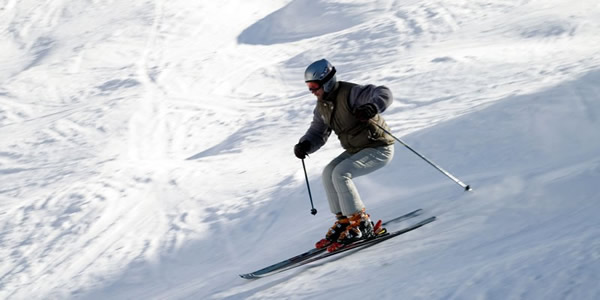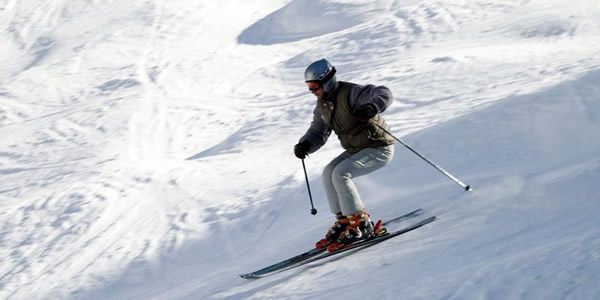In today’s market, we define the skis we use by the terrain for which they’re best suited. For example, narrower, Frontside models are adapted for hard snow at high speed. Wider All-Mountain skis are presumed equally adept at groomed and off-piste conditions; it’s their terrain versatility that makes them the current market darlings.
To quickly encapsulate a ski’s terrain preferences, the ski trade uses a simple ratio to indicate a given model’s aptitude for groomed versus off-piste terrain, such as 80/20, to describe a Frontside ski that would just as soon stick to groomers.
Everyone has virtually the same idea of what falls under the heading of “groomed runs.” Off-piste terrain, however, is a hodgepodge of possibilities. It’s defined by what it isn’t, so it’s bound to conjure different images for all of us.
The ski that’s going to help us conquer off-piste terrain will be fatter, so it will provide better flotation in the most endangered ski condition, uncut powder. But it’s also expected to dart through trees and tiptoe into tight couloirs.
Then there’s the one un-groomed condition that everyone wishes their next “all-mountain” ski would magically manage: moguls. Big, ugly, arrhythmic bumps. Surely there must be a tool that makes navigating this medium more amenable?
Technically speaking, there are such things as mogul skis, but the reason you don’t see them anywhere is because they’re made to run a zipper line through a tailored course mach schnell. This isn’t what most people are thinking of when they inquire of a prospective new ski, “how is it in the bumps?”
What people really are asking is, “Will this ski help me look good in moguls because Lord knows, I need the help?”
The answer, alas, is no.
When it comes to mastery in the moguls, the magic is in the skier, not the skis. The skier has to have timing, reflexes, anticipation and stamina to find the flow in a field full of obstacles, and figure it all out at a pretty good clip. A given ski may inhibit a skier’s reaction time, which makes mogul skiing trickier, but it’s hard to find a ski that can impart sufficient athletic ability to actually make it easier.
In the final analysis, the answer to the question, “How is it in the bumps?” is always the same: it’s as good as you are.
Of course some skis conform to rapid terrain changes better than others, but this capacity won’t by itself solve the riddle of skiing moguls with the efficiency best described as grace.


